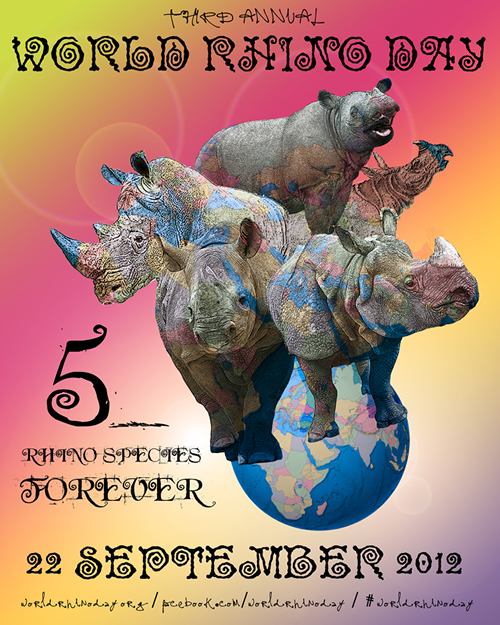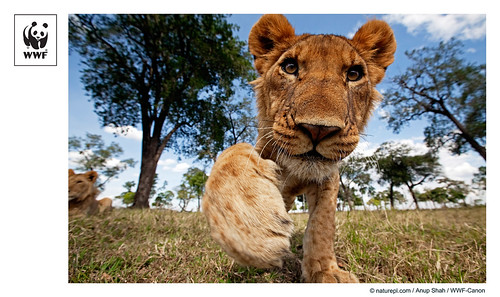An insect study by the University of Novi Sad and the Universtiy of Belgrade looked at the conservation status of noctuid moths in Serbia. The data span from 2000 to 2011 and was conducted under IUCN criteria. The results revealed 28 Critically Endangered, 49 endangered and 58 vulnerable species. Moreover 2 species (Acontia titania and Helivictoria victorina) aren not considered regionally extinct. The authors highlight the need for further conservation efforts for noctuid species.
Saturday, September 15, 2012
International Red Panda Day - 15th September 2012
Today the world celebrates Red Pandas. The Red Panda (Ailurus fulgens) is classified as Vulnerable in IUCN's Red List. Little is known about this animal due to its shyness. It is also because it lives in temperate forests with bamboo-thick understories in Nepal, India, Bhutan, Myanmar, and southern China. The population trend is believed to be decreasing, particularly due to habitat los.
The international Red Panda Day is aimed at raising awareness towards this species and support conservation efforts. The red panda needs to be conserved as its habitat sustain 15% of the human population. Conservation efforts for this species are focused on protecting this habitat, particularly reducing habitat degradation. These temperate forests are the lungs of Southern Asia, much like the Amazon forest in South America, and thus more than 500 million people depend on the integrity of this forest for clean air and water.
Also, red pandas are incredibly cute! So if you want to help, have a look at the websites below!
Red Panda Network
Petition - Save the Red Pandas
 |
| Red Panda (Ailurus fulgens) |
Also, red pandas are incredibly cute! So if you want to help, have a look at the websites below!
Red Panda Network
Petition - Save the Red Pandas
Friday, September 14, 2012
World Rhino Day 22nd September 2012
Only 5 rhino species live in our Planet, 2 are found in Africa and the remaining 3 species live in Southern Asia. All of them are threatened. The rhino is an example of an umbrella species. An umbrella species is a species whose conservation indirectly benefits the surrounding biodiversity. Such is the case of the rhino. Investing in its conservation will ultimately also protect the habitat it lives in, which is important for the global reduction of biodiversity loss and benefit efforts aimed at improving the well-being of the local communities.
For events, news and information please click here
Thursday, September 13, 2012
Essential Sea Otter Booklist - Guardian
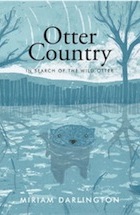 |
| Miriam Darlington, Otter Country: In Search of the Wild Otter |
The sea otter is a rapidly declining species. Its decline is worrying as the species has a critical role in balance of the marine ecosystem and in the fight against global warming.
1. Tarka the Otter by Henry Williamson
2. "An Otter" by Ted Hughes
3. "Otter" by Seamus Heaney
4. Ring of Bright Water by Gavin Maxwell
5. Edal by Gavin Maxwell
6. The Wind in the Willows by Kenneth Grahame
7. The Otter Book by Phyllis Kelway
8. The Life Story of an Otter by JC Tregarthen
9. Otter Moon by Tudor Humphries
10. The Utterly Otterleys by Mairi Hedderwick
read more: Guardian
VIDEO: 5,000 fish identified in less than 24 hours
Speeding Up Science from Facebook Stories on Vimeo.
"In January 2011, Oregon State University ichthyologist Brian Sidlauskas led a research expedition into the little-known Cuyuni River region of Guyana in South America. His team documented more than 5,000 fish, but Guyana’s immigration policies required them to identify and catalog every specimen they wanted to bring back—a nearly impossible task, especially on a tight schedule. Sidlauskas uploaded his research photos to Facebook and tagged members of the scientific community who were able to identify almost all of the photos in under 24 hours."
Stewart McPherson is the first recipient of the David Given Award for Excellence in Plant Conservation.
 |
| Nepenthes attenboroughii a rat-eating carnivorous pitcher plant |
 |
| Stewart McPherson in the Guiana Highlands |
read more: IUCN
IUCN Report: Priceless or Worthless?
 |
| Przewalski's Horse (Equus ferus przewalski), Central Asia |
IUCN and the Zoological Society of London (ZSL) released a new list of the most endangered speices on the planet. This new publication entitled ‘Priceless or Worthless?’ was presented in the IUCN World Conservation Congress in Jeju, Korea.
 |
| Rodrigues fody (Foudia flavicans), Mauritius Islands |
The report looks into the 100 species which aare in the first line to disappear completely. The list was compiled by more than 8000 scientists from the IUCN Species Survival Commission (IUCN SSC) and it includes animals, plants and fungi. Without conservation efforts, these species are the most likely to become extinct. The actions needed to conserve this species are outlined in this publication. Moreover, the report raises a necessary debate on the value of extinction and suggests how to set a value to endangered species within our political, legal, social and economic systems. If such value is not recognised by these systems, scientists fear these species will become extinct.
The report also carries a list of extinctions and the most succeful conservation efforts which have been safeguarding oganisms from extinction. Examples include the recovery of the Przewalski’s horse (Equus ferus przewalski), the Rodrigues fody (Foudia flavicans) and the Humpback whale (Megaptera novaengliae).
“All the species listed are unique and irreplaceable. If they vanish, no amount of money can bring them back. However, if we take immediate action we can give them a fighting chance for survival. But this requires society to support the moral and ethical position that all species have an inherent right to exist.”
-Ellen Butcher, ZSL co-author of the report.
read more: Wiildmigration.org
New bird species can be gone soon
 |
| Antioquia Wren (Thryophilus sernai) |
Researchers at the National University of Colombia spent 2 years studying the Antioquia Wren (Thryophilus sernai), a new bird species first discovered in 2010. This species is only found in the Cauca River in Colombia's Ituango municipality. This wren is distinct from other wren species due to its colouring and vocalisations
Threats and Mitigation
An increase in mining, tourism and deforestation has resulted in rapid habitat loss for this species. Among the biggest threats to the dry-land forest of Colombia is the hydroelectic project in Pescadero-Ituango. The biggest dam in Colombia is expected to flood the forest, which happens to be the Antioquia wren’s best habitat. The forest is also home to other threatened species such as the military macaw (Ara militaris) and the recurve-billed bushbird (Clytoctantes alixii).
Mitigation actions between conservation groups and the government are now underway. Perhaps the most likely solution is to establish a protected area in the unflooded forest upstream of the dam. If the area is big enough to sustain a viable population of wrens and macaws, it might rescue the species from other threats such as logging.
Conservation of the Colombian dry forest
 |
| Military Macaw (Ara militaris) |
“Bird conservation efforts have a history of giving back to local communities for the long-haul in a fashion that has been a win-win for all concerned. The conservation programs are helping to not only protect and rehabilitate the land and forests but they also provide improved habitat for birds and other wildlife that ultimately bring in tourism dollars. And we’ve demonstrated a variety of conservation and farming techniques that benefit wildlife while at the same time offer equal or even higher farming returns”
-Lina Daza Rojas, executive director of Fundación ProAves.
Read more: Birdchannel.com Mongabay.com
NEW STUDY: Are wolves reintroduced to Yellowstone thriving?
 |
| Grey wolf in Yellowstone National Park, USA |
It was found that the coyotes presented a great health risk to the wolves, transmitting diseases such as the canine parvovirus to wild-born wolves. Moreover other conditions emerged after the reintroduction of the wolves, such as mite infections and canine distemper. These health risks can interfere with the growth of the population of grey wolves in Yellowstone. However it seems that the population of grey wolves is stable and thriving, much due to the efforts in protecting and monitoring infectious diseases in Yellowstone.
“The protection of Yellowstone that has afforded the wolf reintroduction effort such great success has also allowed us to watch the natural transition from population growth to limitation or regulation, in which parasites appear to play a significant role.”
-Almberg, E. S. et al. 2012
Abstract:
"Wildlife reintroductions select or treat individuals for good health with the expectation that these individuals will fare better than infected animals. However, these individuals, new to their environment, may also be particularly susceptible to circulating infections and this may result in high morbidity and mortality, potentially jeopardizing the goals of recovery. Here, using the reintroduction of the grey wolf (Canis lupus) into Yellowstone National Park as a case study, we address the question of how parasites invade a reintroduced population and consider the impact of these invasions on population performance. We find that several viral parasites rapidly invaded the population inside the park, likely via spillover from resident canid species, and we contrast these with the slower invasion of sarcoptic mange, caused by the mite Sarcoptes scabiei. The spatio-temporal patterns of mange invasion were largely consistent with patterns of host connectivity and density, and we demonstrate that the area of highest resource quality, supporting the greatest density of wolves, is also the region that appears most susceptible to repeated disease invasion and parasite-induced declines. The success of wolf reintroduction appears not to have been jeopardized by infectious disease, but now shows signs of regulation or limitation modulated by parasites."
Interactive Map - World's Extinct and endangered species
 |
| Interactive map showing the number of extinct and critically endangered species worldwide - Guardian-click to find out more |
"Today, one in eight birds, one in four mammals, one in five invertebrates, one in three amphibians, and half of all turtles face extinction"
-Guardian
Wednesday, September 12, 2012
Save the last 3200 wild tigers! -WWF
A message from WWF:
"Vote to help the last 3200 wild tigers! The Wereld Natuur Fonds (WNF) tiger ad 'Here they are. All of them.' has been nominated for the NRC Charity Awards. WWF can win 300,000 euros media exposure in the NRC, a leading Dutch newspaper. We have to stop tiger poachers NOW because we've already lost 97% of our wild tigers in the last century. So help us get our message across by voting for the WWF ad by September 14.
"Vote to help the last 3200 wild tigers! The Wereld Natuur Fonds (WNF) tiger ad 'Here they are. All of them.' has been nominated for the NRC Charity Awards. WWF can win 300,000 euros media exposure in the NRC, a leading Dutch newspaper. We have to stop tiger poachers NOW because we've already lost 97% of our wild tigers in the last century. So help us get our message across by voting for the WWF ad by September 14.
Go to: http://bit.ly/Me7zK7
1. Click on 'Bekijken', 2. Then under the Dutch ad, fill in your email address, 3. Tick the box 'Ik ga akkoord met de actievoorwaarden' (agree with the terms), 4. You will receive an email to confirm.
That's it! Thanks a lot."
Tuesday, September 11, 2012
Dr. Wolfgang E. Burhenne awarded the Harold Jefferson Coolidge Memorial Medal
 The Harold Jefferson Coolidge Memorial Medal is a prestigious IUCN award that recognises outstanding contributions to the conservation of natural resources. This year, during its World Conservation Congress in Jeju, Korea, IUCN awarded this medal to Dr. Wolfgang E. Burhenne, the Executive Governor of the International Council on Environmental Law.
The Harold Jefferson Coolidge Memorial Medal is a prestigious IUCN award that recognises outstanding contributions to the conservation of natural resources. This year, during its World Conservation Congress in Jeju, Korea, IUCN awarded this medal to Dr. Wolfgang E. Burhenne, the Executive Governor of the International Council on Environmental Law.Dr. Wolfgang has been directly involved in many international conventions on conservation. He was one of the 12 signatories for the establishment of the World Wildlife Fund (WWF) and his insight was critical in the creation of the Convention on International Trade in Endangered Species of Wild Fauna and Flora (CITES).
The medal was first established in 2004. Dr. Robert Goodland, a tropical ecologists and environmnetal advisor for the World Bank, was the first-ever recipient in 2008 at the IUCN's World Conservation Congress in Barcelona.
"Dr. Burhenne has also provided inspiration and encouragement to many individuals throughout his career who have gone on to become leading figures in the field of environmental law." - IUCN
• Dr Abdulaziz Abuzinada, Saudi Arabia
• Ms Angela Cropper, Trinidad and Tobago
• Dr Aila Keto, Australia
• His Excellency, The State President, Lieutenant General Seretse Khama Ian Khama, Botswana
• Mr Veit Koester, Denmark
• Dr Russell Mittermeier, USA
• Dr Russell Mittermeier, USA
• Dr Ian Player, South Africa• Professor Nicholas Robinson, USA
• Dr Marina Silva, Brazil
• Mr Achim Steiner, Germany
• Professor Randolph Robert Thaman, Fiji
read more: IUCN
Sir. David Attenborough awarded the Dr. John C. Phillips Memorial Medal
 The IUCN World Conservation Congress is being held in Jeju, Korea from 6th until the 15th of September. Today (the 11th) the congress honoured Sir. David Attenborough with the Dr. John C. Phillips Memorial Medal. This medal is considered the IUCN's highest conservation award, with a list of lustrous fellow recipients such as Professor Edward O. Wilson.
The IUCN World Conservation Congress is being held in Jeju, Korea from 6th until the 15th of September. Today (the 11th) the congress honoured Sir. David Attenborough with the Dr. John C. Phillips Memorial Medal. This medal is considered the IUCN's highest conservation award, with a list of lustrous fellow recipients such as Professor Edward O. Wilson. Sr. David Attenborough's contributions to international conservation are known across the globe. Perhaps they are better reflected in science classrooms and lecture rooms at universities where most students will name that the BBC broadcaster as one of the main reasons they want to pursue career in natural sciences.
This memorial medal will join several other prestigious awards that Sir. David has been collecting over the last 50 years
"Sir David has reached the masses with his captivating programmes on natural history (...) inspiring generations to protect and conserve our planet."
-IUCN
read more: IUCN
Who is Ron Taylor - (R.I.P - 09/09/12)
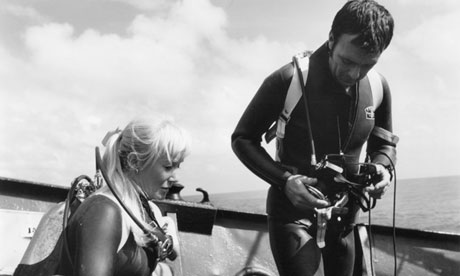 |
| Valerie and Ron Taylor in 1971. Photograph: Michael Ochs Archives/Getty Images |
Ron Taylor was his name and the name will always be associated with his successful wildlife film-making career and his involvement in marine conservation. A shark expert and marine biologist, he began his career as a spear fisherman but then changed weapons and started "hunting" marine life with a camera. Since then Ron and his beloved wife Valerie have been advocates of marine conservation. Their impressive work earned them the title of 'gods of the sharks' and both were awarded the Membership of the Order of Australia, first Ron in 2003 and Valerie in 2010.
 |
| Ron and Valerie Taylor in their Sydney home, 2009 |
read more: Guardian
Signs of Hope for Biodiversity (Infographic) - WORLD BANK
The size and number of protected areas around the world is increasing.
Investment in biodiversity is increasing.
from: World Bank
Why Biodiversity Matters (Infographic) - WORLD BANK
70% of the world's poor live in rural areas and
depend directly on biodiversity for their survival and well-being.
from: World Bank
What's Happening to Biodiversity? (Infographic) - WORLD BANK
 |
| WORLD BANK - What's Happening to Biodiversity? click here for full view |
Joel Sartore's Photo Ark Project
.jpg) |
| Panamanian golden frog (Atelopus zeteki) critically endangered frog endemic to Panama |
Joel Sartore is a National Geographic photographer who has spent the last 6 years doing studio photography. Though it might sound like a contradictory statement, Sartore's reasons are more than justified. He's photographing as many animal species as he can, most of them endangered. With either a black or white background he hopes to put all species at equal terms.
 |
| Clouded leopard (Neofelis nebulosa) Vulnerable felid found in Himalayas, SE Asia and China |
The project, called Photo Ark, already has more than 2000 animal photographs but despite being busy with animals in the studio, Sartore still finds the time to continue his work with National Geographic magazine, having completed more than 30 projects already.
This is an impressive achievement and the photographs speak for themselves. With Photo Ark Sartore hopes to introduce these species to all corners of the Earth and give these animals a chance of survival.
“You can’t fall in love with something if you haven’t met it.”
Joel Sartore
find out more: www.photoark.net
Biggest Protected Area In Madagascar
It's official ! Makira Natural Park, with an area of around 380.000 hectares is the largest protected area in Madagascar. This forest in the northwestern part of the island is one of the most biodiverse regions in Madagascar housing almost 20 species of lemurs.
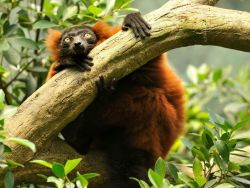 “Not only does Makira protect the largest remaining tract of the island’s rainforest, but it is a demonstration of a new model for integrated conservation in Madagascar where local communities – de facto stewards of the forest resources – become partners with the State in protected area management.”
“Not only does Makira protect the largest remaining tract of the island’s rainforest, but it is a demonstration of a new model for integrated conservation in Madagascar where local communities – de facto stewards of the forest resources – become partners with the State in protected area management.”
Read more at: Mongabay: http://news.mongabay.com/2012/0817-makira-madagascar-wcs.html#o5ytBbFyCQdPLb7t.99
The park will be funded under the REDD+ scheme (Reduce Emissions through Deforestation and Forest Degradation) with some of the money going to the local communities.
 “Not only does Makira protect the largest remaining tract of the island’s rainforest, but it is a demonstration of a new model for integrated conservation in Madagascar where local communities – de facto stewards of the forest resources – become partners with the State in protected area management.”
“Not only does Makira protect the largest remaining tract of the island’s rainforest, but it is a demonstration of a new model for integrated conservation in Madagascar where local communities – de facto stewards of the forest resources – become partners with the State in protected area management.”
Christopher Holmes, Director of Wildlife Conservation Society’s Madagascar Program
Read more at: Mongabay: http://news.mongabay.com/2012/0817-makira-madagascar-wcs.html#o5ytBbFyCQdPLb7t.99
Monday, September 10, 2012
Sea Otter Awareness Week 23rd -29th Sept 2012
Sea Otters Fight Against Global Warming
 An examination of 40 years of data on the sea otters from Canada do Alaska has revealed that these creatures are important to the fight against global warming. This is due to the sea otters eating habits as they eat the sea urchins and thus allow the marine kelp forests to flourish.
An examination of 40 years of data on the sea otters from Canada do Alaska has revealed that these creatures are important to the fight against global warming. This is due to the sea otters eating habits as they eat the sea urchins and thus allow the marine kelp forests to flourish.
The kelp forests absorb carbon dioxide and produce organic matter similar to terrestrial forests and thus slow the rising of carbon dioxide in the ocean.
Overall it is believed that the presence of sea otters is critical to maintain the balance of the marine ecosystem.
read more: http://www.livescience.com/23030-sea-otters-may-be-global-warming-warriors.html
Action for our planet:http://www.actionforourplanet.com/#/blog/4553718851/Sea-Otters-Good-for-the-Environment/3470277
 An examination of 40 years of data on the sea otters from Canada do Alaska has revealed that these creatures are important to the fight against global warming. This is due to the sea otters eating habits as they eat the sea urchins and thus allow the marine kelp forests to flourish.
An examination of 40 years of data on the sea otters from Canada do Alaska has revealed that these creatures are important to the fight against global warming. This is due to the sea otters eating habits as they eat the sea urchins and thus allow the marine kelp forests to flourish.The kelp forests absorb carbon dioxide and produce organic matter similar to terrestrial forests and thus slow the rising of carbon dioxide in the ocean.
Overall it is believed that the presence of sea otters is critical to maintain the balance of the marine ecosystem.
read more: http://www.livescience.com/23030-sea-otters-may-be-global-warming-warriors.html
Action for our planet:http://www.actionforourplanet.com/#/blog/4553718851/Sea-Otters-Good-for-the-Environment/3470277
Paid Volunteer vacancy - Animal Cognition
Cape ground squirrels of The Kalahari
 Project set up by the University of Cambridge and Zurich University
Project set up by the University of Cambridge and Zurich University
Based at the Meerkat Research Station.
Period of 12 months
Accommodation and paid a monthly allowance for food.
If you are interested in this position, please send a CV and a short letter stating your motivation to apply, and two names acting as referees to:jamiesamson@hotmail.com
The closing date for applications is the 10th September and persons shortlisted must be available on either the 17th or 18th September for a Skype video interview.
 Project set up by the University of Cambridge and Zurich University
Project set up by the University of Cambridge and Zurich UniversityBased at the Meerkat Research Station.
Period of 12 months
Accommodation and paid a monthly allowance for food.
If you are interested in this position, please send a CV and a short letter stating your motivation to apply, and two names acting as referees to:jamiesamson@hotmail.com
The closing date for applications is the 10th September and persons shortlisted must be available on either the 17th or 18th September for a Skype video interview.
New Hawk- Owl Species Discovered in the Phillipines
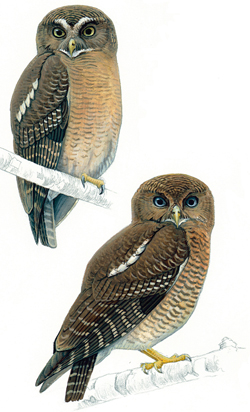 |
Top: Cebu Hawk-Owl
Bottom: Camiguin Hawk-Owl
|
The discovery of the Cebu hawk-owl is one of the 3 endemic bird species found in this island and this owl species is believed to be endangered. The other two endemic species are song bird Black Shama or siloy (Copsychus cebuensis) and the Cebu Flowerpecker (Dicaeum quadricolor).
The discovery of the Cebu hawk-owl is one of the 3 endemic bird species found in this island and this owl species is believed to be endangered. The other two endemic species are song bird Black Shama or siloy (Copsychus cebuensis) and the Cebu Flowerpecker (Dicaeum quadricolor).
Read more:
mongabay:New owl species discovered in the Philippines
Inquirer News: Cebu Hawk Owl among 8 new species in int’l study of Philippines’ ‘spectacular diversity’
IUCN's Red List of Ecosystems
This new initiative was first conceived in 2008 and is projected to be have complete global coverage by 2025. Based on the Red List of Threatened Species, the project is aimed at assessing the vulnerability of ecosystems based on an internationally accepted criteria for risk assessments of ecosystems.
This list will help conservation action and decision-making, particularly in studies of land use and ecological restoration and provide important link between the health of an ecosystem and human well-being.
“We envision that it could become a one-stop shop for economists, rural communities, local and national authorities, who can use the assessments of the Red List of Ecosystems to better manage the finite resources of our planet,”
- Edmund Barrow, Head of the IUCN Ecosystem Management Programme.
An Interview with David Quammen - Mongabay
 |
| Spillover - Animal Infections and the next human pandemic, 2012 |
 |
| David Quammen |
Read (click on link):
An interview with conservation writer David Quammen
By Nandini Velho and Umesh Srinivasan, special to mongabay.comSeptember 05, 2012
Endangered Spider Found in San Antonio, USA
Northwest San Antonio, USA - Construction for a $15.1 million highway underpass project on Texas 151 is halted indefinitely. Why? Because a spider that hasn't been seen in the area for 30 years was living there! This spider was confirmed to ben an endangered species of meshweaver.
Read more: http://www.mysanantonio.com/news/local_news/article/Tiny-spider-is-a-big-roadblock-3849198.php#ixzz263jVHHCG
Read more: http://www.mysanantonio.com/news/local_news/article/Tiny-spider-is-a-big-roadblock-3849198.php#ixzz263jVHHCG
Friday, May 4, 2012
WWF Pic of the Week #09 - Curiousity
WWF Pic of the Week #09 - Curiousity
Curious about your world? There's always something to suprise you in its infinite variety.
A curious juvenile African Lion (Panthera leo) reaches out to inspect a hidden camera with it's paw, Masai Mara National Reserve, Kenya.
Find out more about the natural world and - what WWF does to help conserve it.
© naturepl.com / Anup Shah / WWF-Canon
- WWF Pic of the Week
Curious about your world? There's always something to suprise you in its infinite variety.
A curious juvenile African Lion (Panthera leo) reaches out to inspect a hidden camera with it's paw, Masai Mara National Reserve, Kenya.
Find out more about the natural world and - what WWF does to help conserve it.
© naturepl.com / Anup Shah / WWF-Canon
- WWF Pic of the Week
Sunday, April 29, 2012
Cetacean Conservation-challenges and solutions
Steering the right course for cetacean conservation
 One of the greatest challenges facing cetacean conservation is to get a clear and conclusive diagnosis. By that I mean understanding, first, the true status of a species or population and second, the drivers that determine such status. Gone are the days when things seemed simple: stop the deliberate killing (or at least reduce and manage it rationally) and the animals will recover. Now there are so many other factors to consider that we are often in a state of decision paralysis, unable to move ahead with confidence that one particular fix, or even a particular suite of fixes, will turn things around.
One of the greatest challenges facing cetacean conservation is to get a clear and conclusive diagnosis. By that I mean understanding, first, the true status of a species or population and second, the drivers that determine such status. Gone are the days when things seemed simple: stop the deliberate killing (or at least reduce and manage it rationally) and the animals will recover. Now there are so many other factors to consider that we are often in a state of decision paralysis, unable to move ahead with confidence that one particular fix, or even a particular suite of fixes, will turn things around.
Another challenge is to avoid being so distracted by crisis situations that we fail to pay attention to ‘non-crises’ – by that I mean populations that appear to be doing fine but rapidly and unexpectedly prove otherwise.
By Randall Reeves, Chair of IUCN’s Cetacean (dolphins whales and porpoises) Specialist Group and one of the recipients of the Species Survival Commitment Chair's Citation of Excellence in recognition of his leadership of whale and dolphin conservation worldwide.
 One of the greatest challenges facing cetacean conservation is to get a clear and conclusive diagnosis. By that I mean understanding, first, the true status of a species or population and second, the drivers that determine such status. Gone are the days when things seemed simple: stop the deliberate killing (or at least reduce and manage it rationally) and the animals will recover. Now there are so many other factors to consider that we are often in a state of decision paralysis, unable to move ahead with confidence that one particular fix, or even a particular suite of fixes, will turn things around.
One of the greatest challenges facing cetacean conservation is to get a clear and conclusive diagnosis. By that I mean understanding, first, the true status of a species or population and second, the drivers that determine such status. Gone are the days when things seemed simple: stop the deliberate killing (or at least reduce and manage it rationally) and the animals will recover. Now there are so many other factors to consider that we are often in a state of decision paralysis, unable to move ahead with confidence that one particular fix, or even a particular suite of fixes, will turn things around.Another challenge is to avoid being so distracted by crisis situations that we fail to pay attention to ‘non-crises’ – by that I mean populations that appear to be doing fine but rapidly and unexpectedly prove otherwise.
We need to avert more species extinctions, having recently lost the Yangtze river dolphin (baiji), and find more effective ways of using the ‘charisma’ of cetaceans – without in the process compromising scientific integrity – for ecosystem protection and restoration.
The best conservation success stories for cetaceans are those of the groups of people who have steered international bodies in certain directions. This includes the International Whaling Commission towards protection of species like right whales, gray whales and humpback whales that are now recovering in many parts of their range; the United Nations towards banning large-scale driftnets on the high seas which were killing huge numbers of dolphins and porpoises and the tuna industry in the Pacific towards ‘dolphin-friendly’ fishing practices which have dramatically reduced the mortality of dolphins.
Perhaps the most significant contribution of our Specialist Group has been to raise global awareness of freshwater cetaceans and provide support for conservation biologists and activists who are working in very difficult circumstances to improve the prospects of those species.
articles from: IUCN-http://portals.iucn.org/blog/2012/04/12/steering-the-right-course-for-cetacean-conservation/
Subscribe to:
Posts (Atom)

